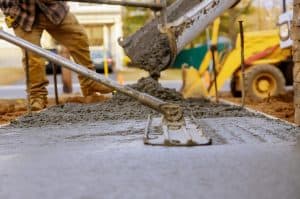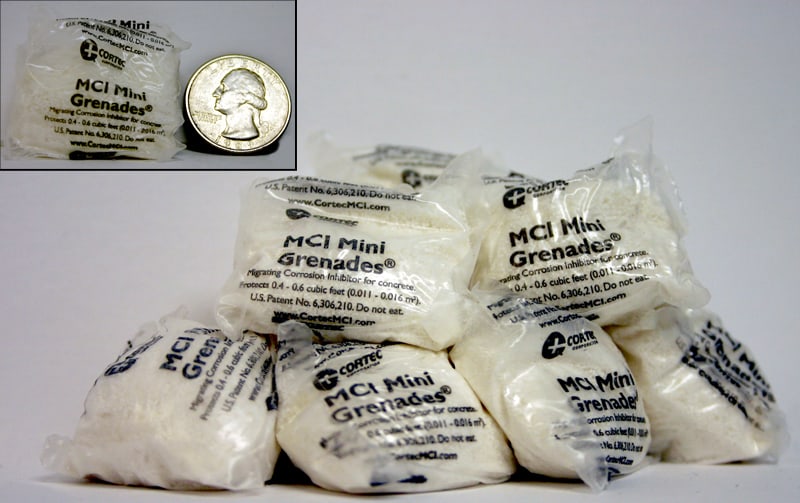Three of the main causes of corrosion in reinforced concrete are chlorides, carbonation, and sulfates. While Migrating Corrosion Inhibitors have been known to protect against the first two, more research needs to be done on the power of MCI® against sulfates. However, two recent research projects are already suggesting exciting possibilities for the use of MCI® in sulfate rich environments.
The Sulfate Corrosion Problem
Some environments are more corrosive due to a naturally higher level of sulfates. For example, there is typically a higher sulfate content in the ocean than on the land, meaning offshore and marine reinforced concrete structures face the twofold threat of high chlorides and high sulfates. Certain types of soil also have higher sulfates. However, one of the most common culprits for sulfate corrosion is the microbial induced corrosion (MIC) common in wastewater environments. In fact, a wastewater culvert is a perfect breeding ground for sulfate reducing bacteria (SRB) and sulfate oxidizing bacteria (SOB). The result of their sulfate reducing and oxidizing cycles is a high concentration of sulfate that directly eats away at the concrete surface, ultimately leaving rebar exposed to further corrosion and deterioration. Such environments desperately need corrosion inhibitors that will (1) work in the presence of sulfates and (2) ideally protect against sulfate attack on the concrete itself.
MCI® in Research Studies
An independent study published in 2018 by several researchers from the King Fahd University of Petroleum & Minerals in Saudi Arabia helps answer the first concern. The study looked at five concrete corrosion inhibitors, including one “based on amine carboxylate” (as are most MCI® admixtures). The inhibitors were tested in a chloride rich environment with sulfate added at 500 and 2000 ppm.
Almost all inhibitors tested showed only a marginal impact on corrosion inhibiting effectiveness when increasing exposure from 1000 ppm chloride concentration and zero sulfate to 1000 ppm chloride and 2000 ppm sulfate concentration. While amine carboxylate inhibitor efficiency dropped from 85% to 70% with the addition of sulfates at 2000 ppm, it stayed at a significantly high level to warrant use in high chloride-sulfate environments.
Even though calcium nitrite (CNI) inhibitors were tested at a much higher dose (25 times more) than the amine carboxylate inhibitor, they only offered a marginal increase in efficiency levels. In addition, Cortec’s MCI® amine carboxylate admixtures typically offer many advantages over CNI, such as biobased content (e.g., MCI®-2005 is a USDA Certified Biobased Product), certification to meet NSF Standard 61 for drinking water system components, protection against carbonation corrosion, and no acceleration of set time.
Although further research must be done, another whitepaper forthcoming in 2023 also suggests exciting possibilities for the use of MCI® in high-sulfate environments like those with MIC problems. In particular, the chemistries used in MCI®-2005 and MCI®-2018 demonstrated a degree of protection against the deterioration of the concrete itself, not simply protection against rebar corrosion in the presence of sulfates.
Where Do We Go from Here?
These discoveries warrant further investigation and experimentation. In the meantime, specifying engineers working with wastewater and other high sulfate environments should begin to seriously consider the possible benefits of MCI®-2005 admixture and MCI®-2018 two-in-one water repellent / SACI (surface applied corrosion inhibitor) when designing structures and components to withstand these highly corrosive environments. The addition of MCI® to tanks, culverts, and many other structures in the field may lead to further important discoveries in the quest to extend service life in the presence of high sulfates. Contact Cortec® for additional data and consultation: https://www.cortecmci.com/contact-us/
Keywords: microbial induced corrosion, MIC in concrete, extend service life, wastewater corrosion, sulfate corrosion, concrete corrosion, sulfate attack, Cortec, MCI research, rebar corrosion
Need a High-Resolution Photo? Please Visit: www.cortecadvertising.com
For a PDF version please click here.



